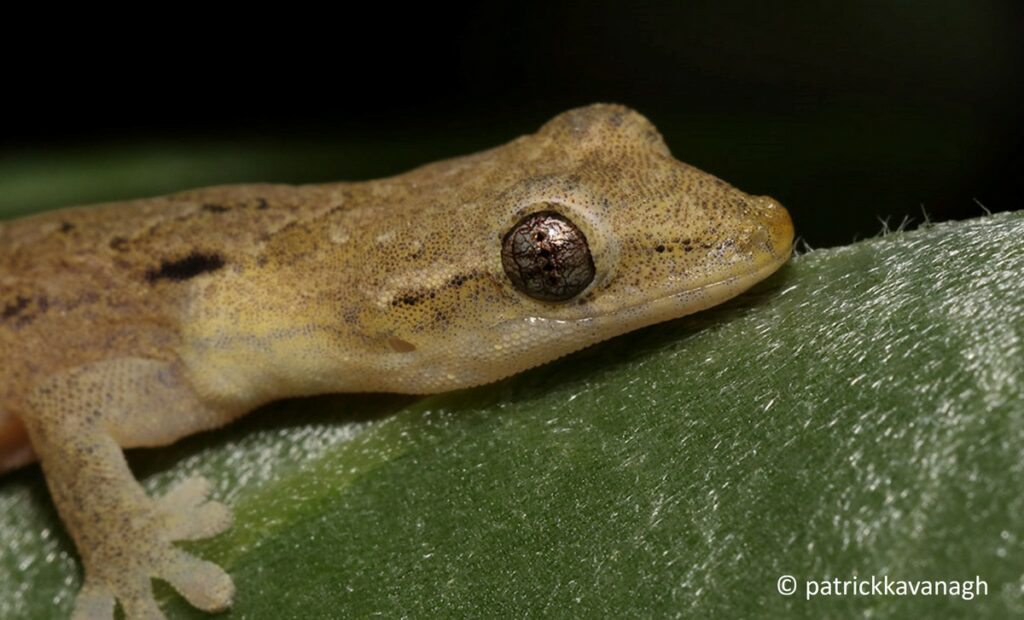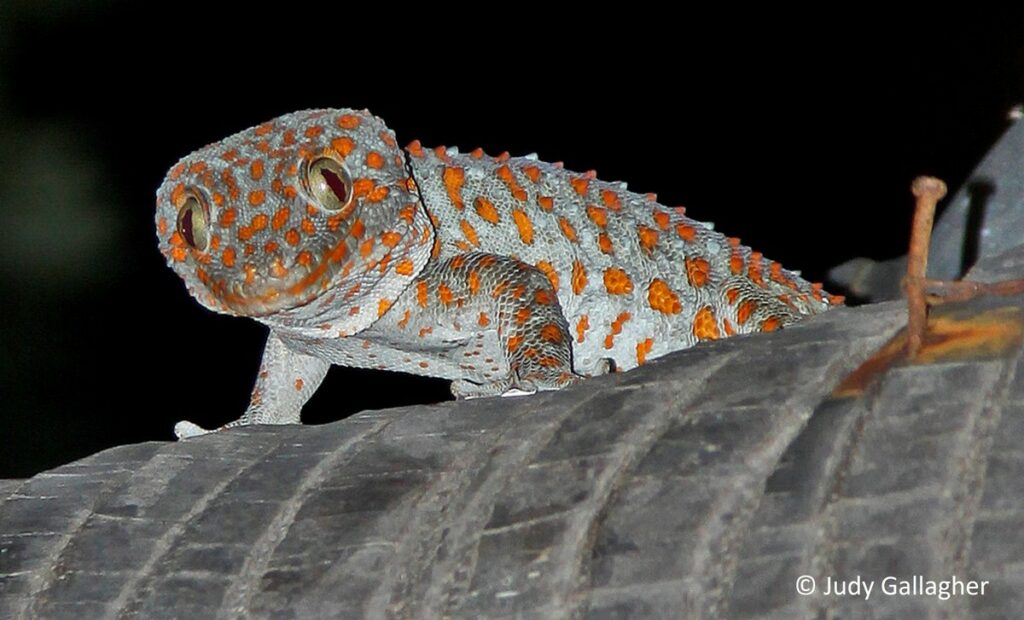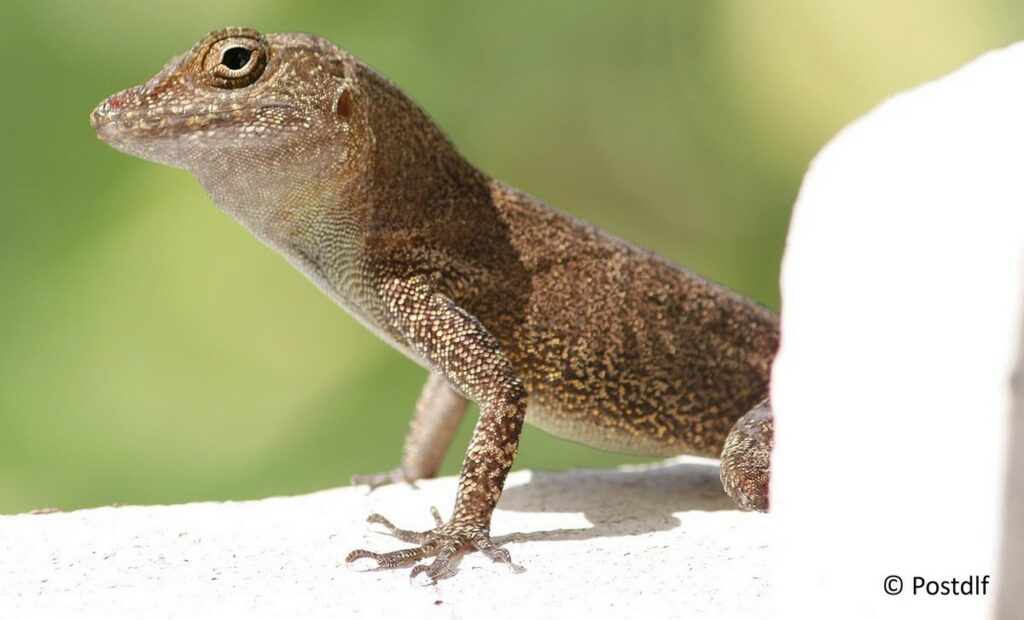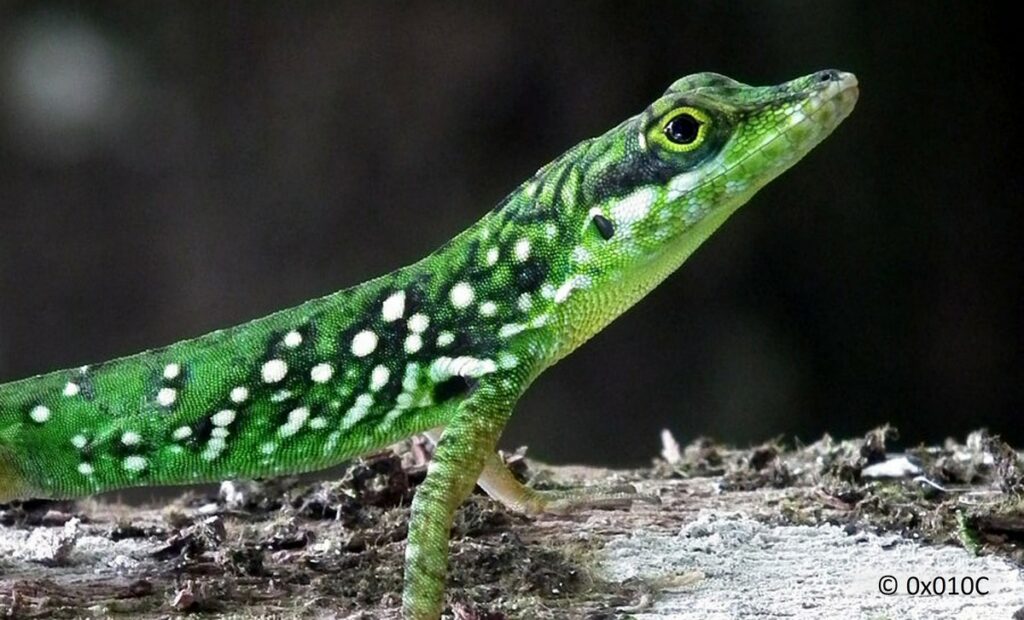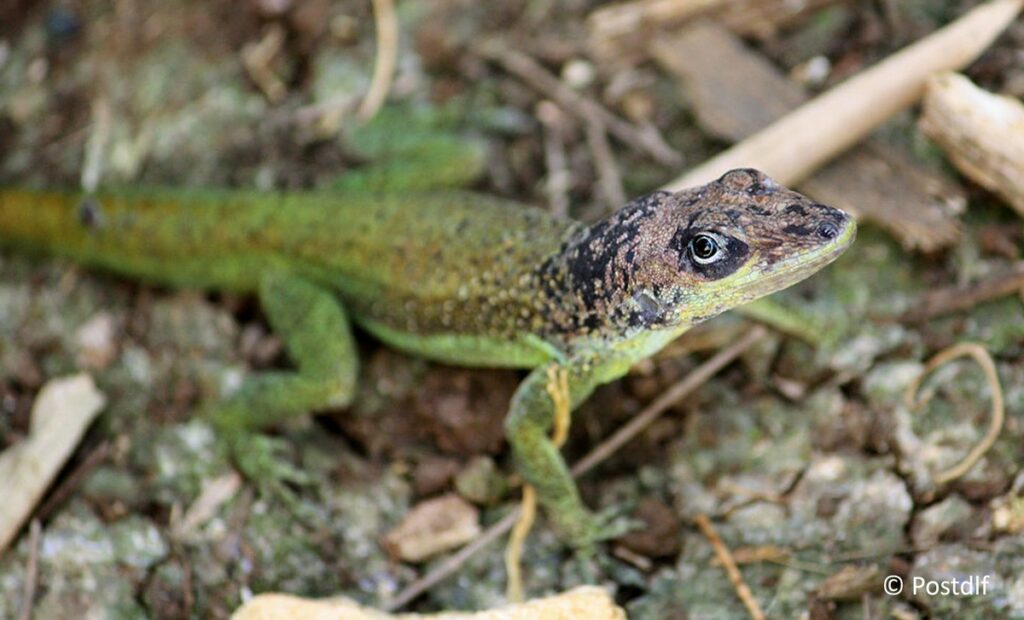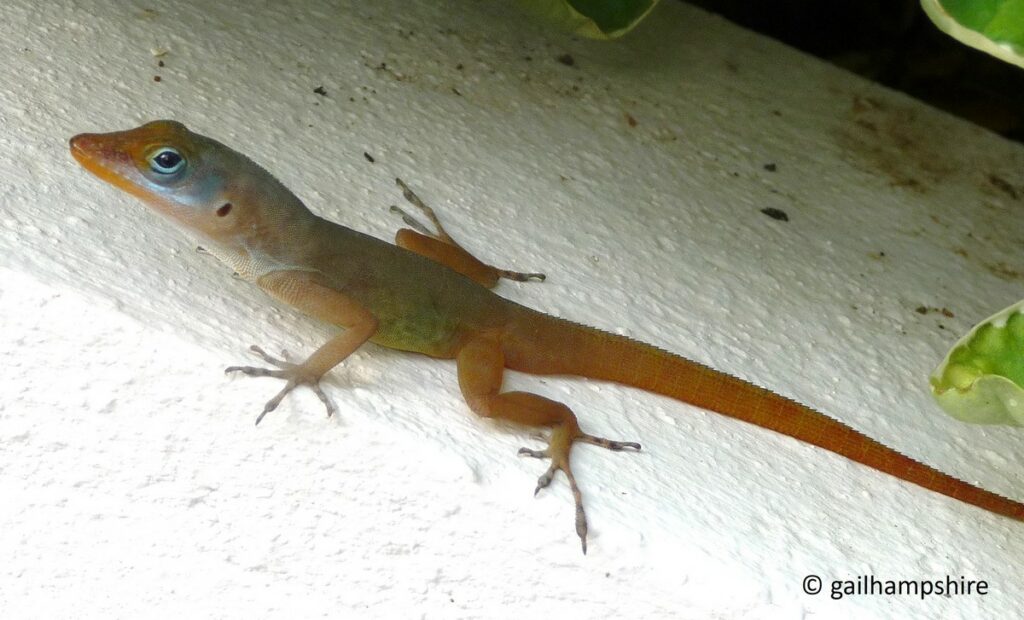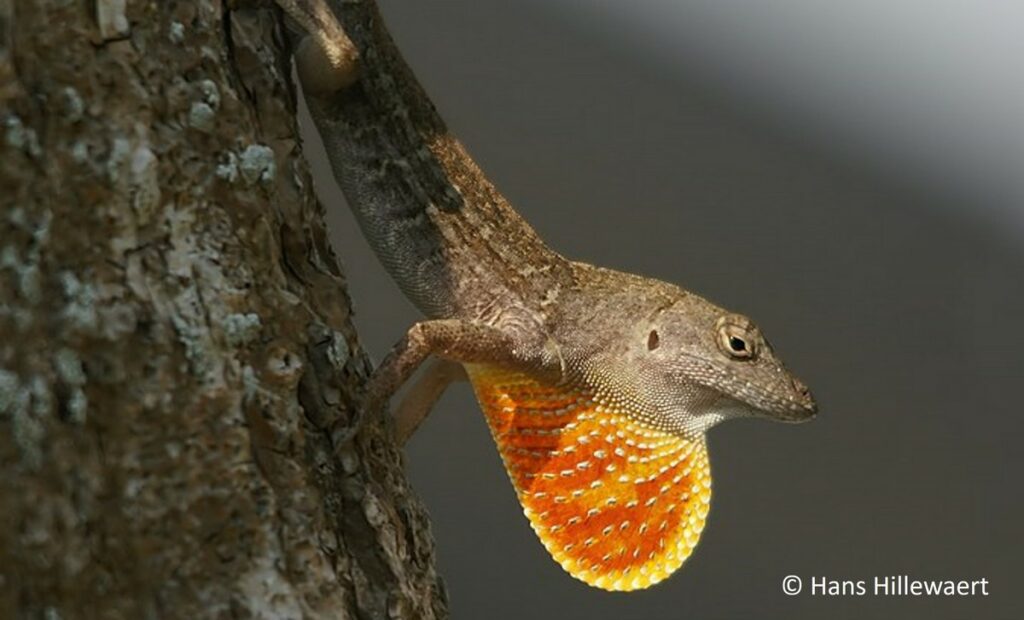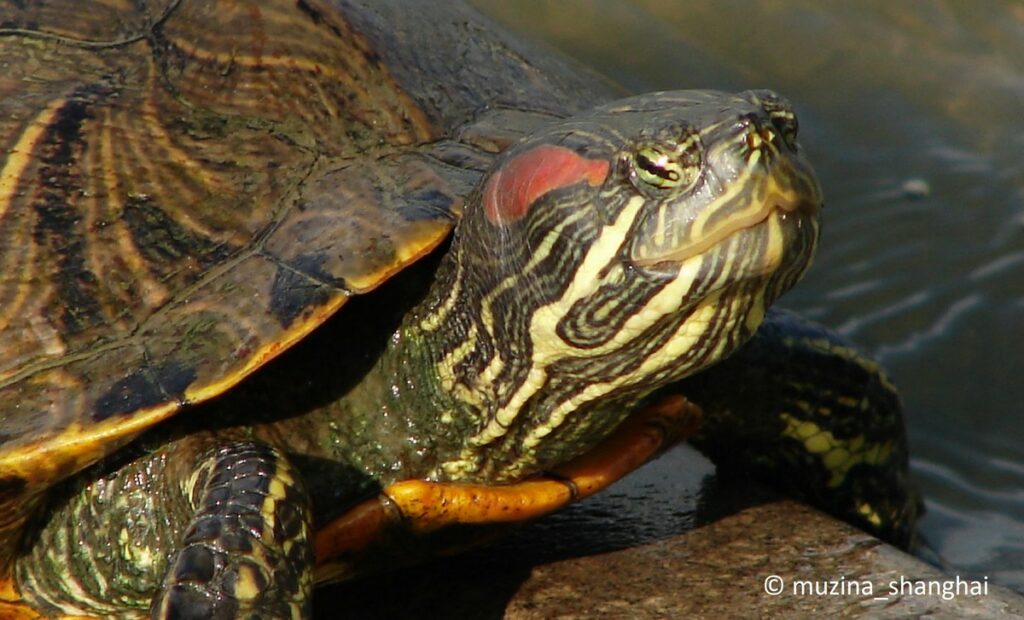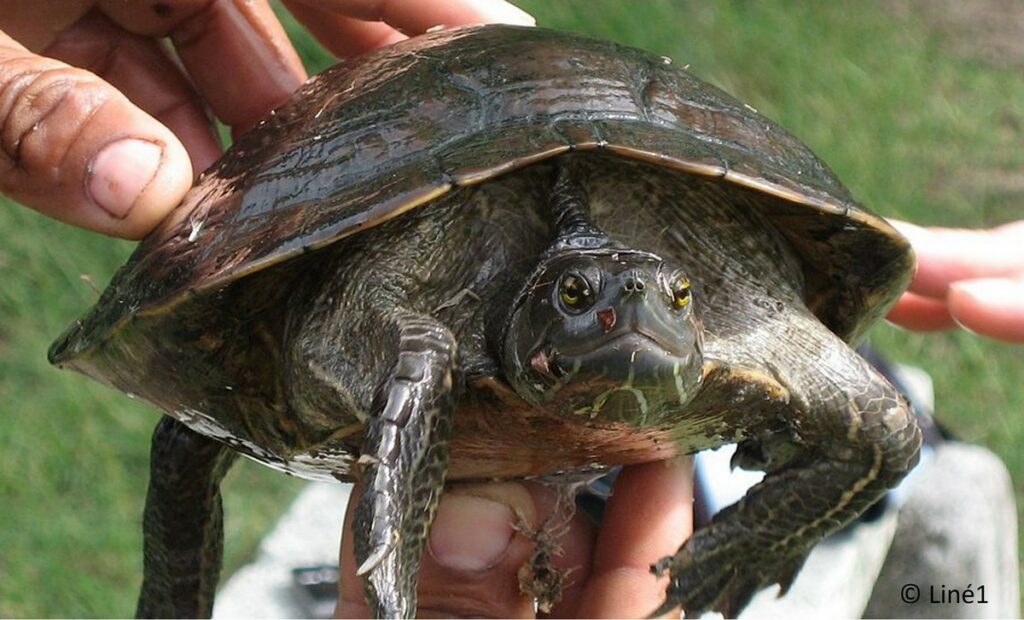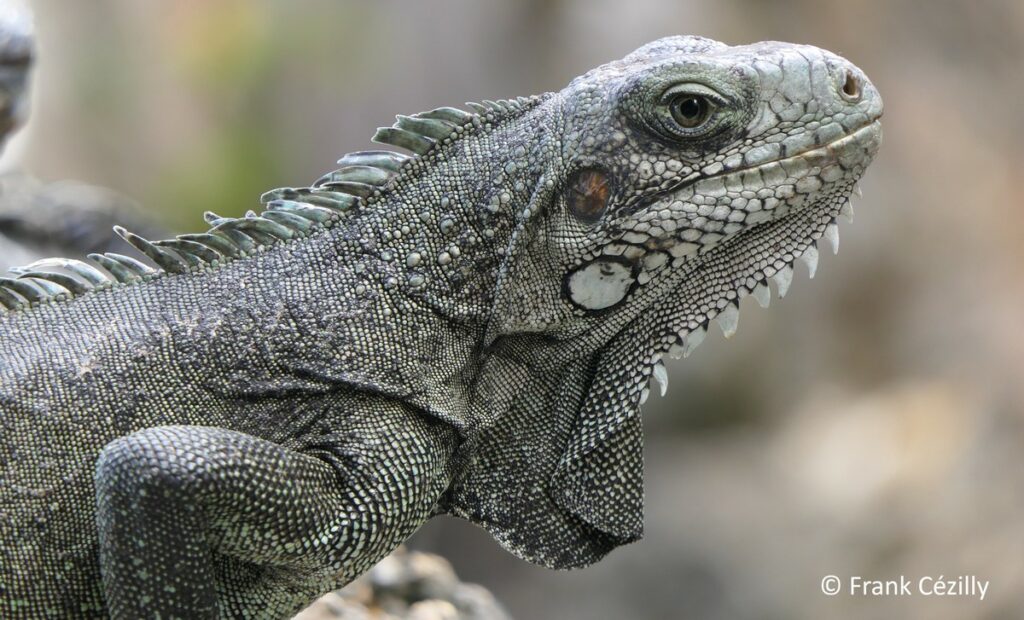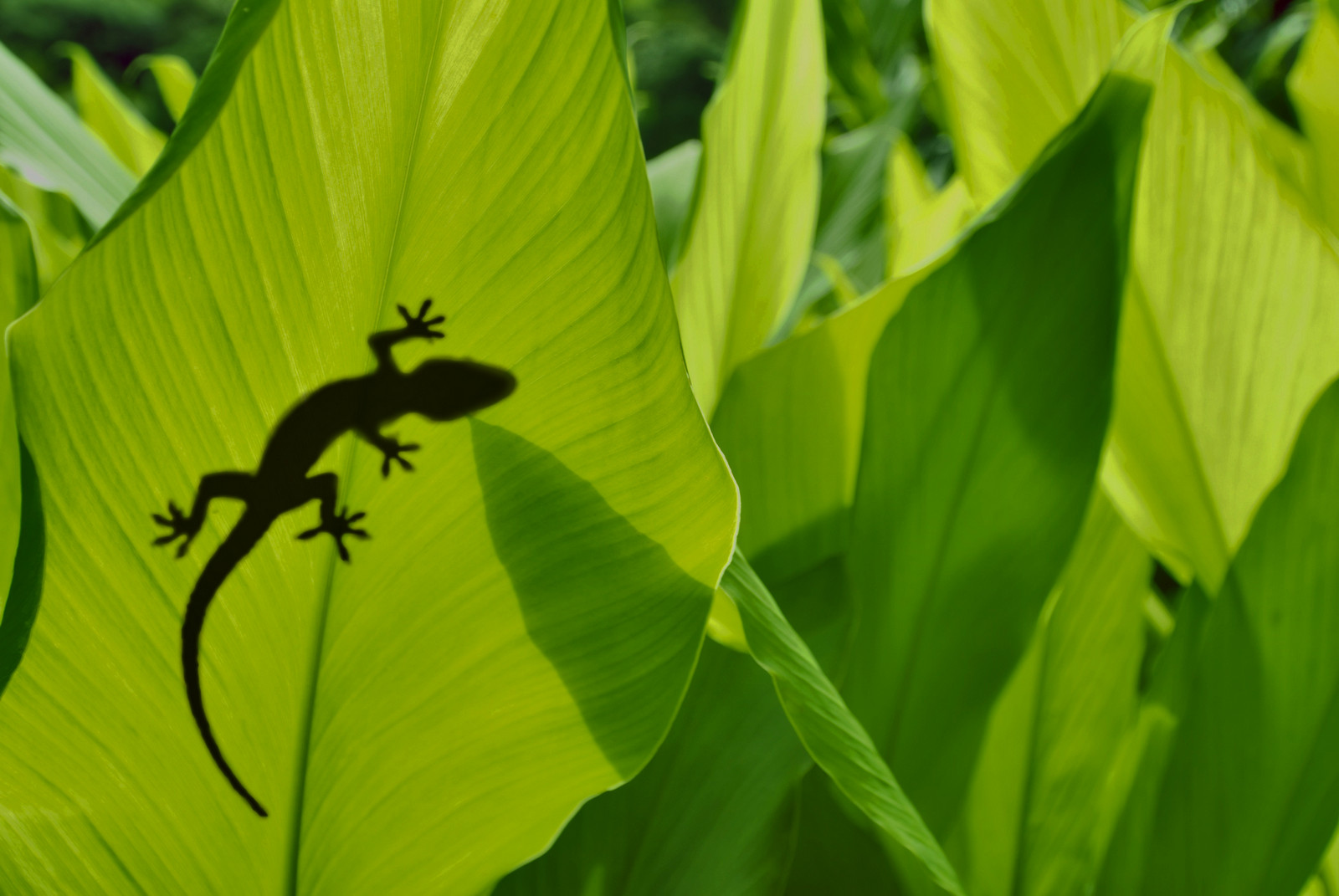
Research projects
Invasive exotic geckos
Invasion dynamics and impact of invasive exotic gecko species in the French West Indies
Mourning gecko
The mourning gecko (Lepidodactylus lugubris) was recently introduced in Guadeloupe, where it quickly prospered in the urban environments, in particular thanks to its reproduction by parthenogenesis which gives the species a strong power of colonization. Although this species has also been introduced to other regions of the world, its impact on native species remains poorly understood. Moreover, if its current distribution in Guadeloupe is limited to heavily anthropized sites, data from other island environments indicate that the species can also colonize the natural habitat where its ecological impact could be more severe.
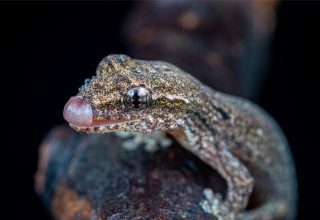
Research project
- Presence and abundance of the species: the research will initially aim to document the presence and relative abundance of the species in the urban space and in the natural environments of Guadeloupe, in particular in the mangrove areas which constitute a natural habitat of the species in its original geographical area. For this, a participatory science program involving students from the Université des Antilles will be set up to significantly increase the data.
- Reproduction and interaction with native species: studies in the field and under experimental conditions will be conducted to document seasonal variations in reproductive activity, and to estimate the degree of interaction of the mourninf gecko with native reptile species. des études sur le terrain et en conditions expérimentales seront conduites pour documenter les variations saisonnières dans l’activité reproductrice, et estimer le degré d’interaction du gecko nain avec les espèces de reptiles autochtones.
Tokay gecko
The Tokay gecko (Gekko gecko) was introduced in the 1960s in Martinique and more recently in Guadeloupe. This species has a high invasive potential thanks to its long lifespan (up to 10 years in captivity), its territorial way of life and its vast diet consisting of invertebrates (insects and spiders) but also vertebrates (other geckos, lizards, mice, chicks and snakes). Its high aggressiveness makes the Tokay gecko a potential threat to other reptile species in Martinique and Guadeloupe, such as the turnip-tailed gecko, Thecadactylus rapicauda, a native species that experiences predation of its juveniles and potential competition for the resources. In addition, the Tokay gecko carries parasites (salmonella and bacteria resistant to antibiotics) potentially transmissible to humans and other animal species. Its proliferation in the French West Indies and on other surrounding islands could therefore have significant impacts on local fauna through competitive and predatory interactions and the transmission of diseases and/or parasites.
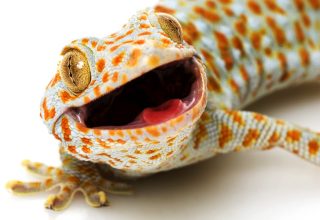
Research project
- Demographic monitoring: The monitoring of the demographic growth of populations in Martinique will be carried out by Capture-Marking-Recapture in well-defined areas where the presence of the species is proven, as well as by the use of acoustic recordings of male vocalization. Indeed, males emit powerful vocalizations to defend their territory and attract females during the breeding season.
- Capture of individuals: the possibility of attracting individuals by emitting the typical vocalizations of the species in order to facilitate their capture will be assessed in the field.
Exotic anole lizards
Impact of exotic anole lizards in two islands of the English-speaking Lesser Antilles
In the islands of Dominica, Saint Lucia and Saint Vincent and the Grenadines, several species of exotic anole lizards have been introduced over the past twenty years. The crested anole, Anolis cristatellus, is a major concern in Dominica, particularly because of its very aggressive nature which has played a role in the recent decline of the native species A. oculatus. At the end of 2020, the invasive species A. roquet, originating from Martinique, was also identified in Dominica. In addition, three species of exotic anoles, A. extremus (from Barbados), A. watsii (from Antigua) and A. sagrei (from Cuba), have recently been introduced to Saint Lucia, and potentially threaten the local species, A. luciae. Finally, in Saint-Vincent, the two endemic anole species A. griseus and A. trinitatis have also been facing the introduction of the species A. sagrei for several years.
The high invasive potential of A. cristatellus has been documented in several locations, including Dominica. Current knowledge is too scarce to predict the dynamics of expansion of the four other species of introduced anoles, or to predict their interactions between each other and with native species. This knowledge is essential for controlling biological invasions and maintaining biodiversity in the Lesser Antilles.
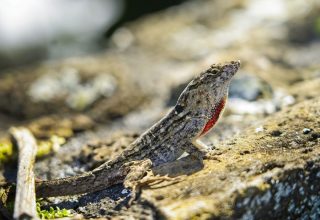
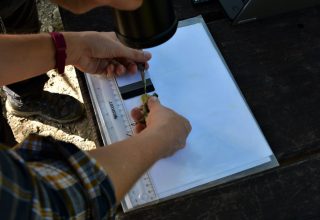
Research project
- Invasion dynamics and impact on native species: regular monitoring based on the capture-mark-recapture method will provide a better understanding of the invasion dynamics of invasive anole species and their impact on native species.
- Distribution and ecological niche: monitoring will also provide information about the distribution of anole species on the islands studied and their ecological niche (habitat, temperature, altitude, diet).
- Morphological characteristics: the measurements taken during monitoring will be used to determine the morphological characteristics of the species, in order to establish scenarios of the presence/absence of invasive and native species in the different islands.
Coexistence between species: in parallel with morphological characteristics, the quantification of parasitic infections and the study of interactions and behavioral variations on the basis of videos made in natura will provide an overall view of the mechanisms of coexistence between the different species.
Exotic freshwater turtles
Impact of exotic freshwater turtles of the genus Trachemys on the biodiversity of freshwater environments in the French West Indies: implications for species management
In the French West Indies, two species of Trachemydes are present. The species Trachemys stejnegeri, native to Puerto Rico, was probably introduced during the Amerindian era. The presence of the T. scripta species is much more recent, and linked to its commercialization as a pet. Both species have an omnivorous and opportunistic diet, consuming aquatic plants as well as fish and invertebrates. Their distribution, abundance and impact on freshwater ecosystems need to be documented.
Research project
- Demographic parameters: the two species will be studied in Martinique and Guadeloupe to estimate their relative abundance, the structure of the populations, as well as other demographic parameters thanks to the capture-mark-recapture method.
- Reliability of investigation techniques: in addition to traditional investigations, the environmental DNA technique will be tested on several sites to assess its relevance in the field with regard to observational and trapping methods.
Common iguana
Reinforcement of the control of common iguana populations in three islands of the English-speaking Lesser Antilles
Common iguanas, also known as green iguanas (Iguana iguana), have gradually invaded the Lesser Antilles, threatening local species. The actions that will be implemented are in the continuity with those taken in the Lesser Antilles Iguana national action plan managed by the Office National des Forêts in the French West Indies. They constitute an extension in other Caribbean islands (Dominica, Saint Lucia and Saint Vincent and the Grenadines), which aims to protect the Lesser Antillean iguana, Iguana delicatissima, and two recently identified local subspecies, Iguana i. sanctaluciae and Iguana i. insularis, against the common iguana. The control of common iguanas consists in particular in the elimination of males during the mating period and the destruction of nests and females during the nesting season, using traps.
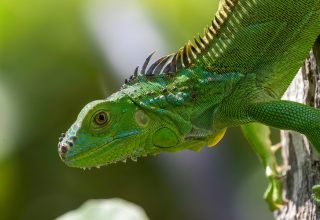

The MERCI project is coordinated by Caribaea Initiative, an international NGO that develops research and education projects for the conservation of biodiversity in the Caribbean.

The MERCI project is co-funded by the INTERREG Caribbean program under the European Regional Development Fund (FEDER).

The MERCI project, acronym for ” Managing Exotic Reptiles on Caribbean Islands”, aims to study invasive exotic reptiles in order to adapt management measures.
- Contact : merci-project@caribaea.org
- Legal notices

